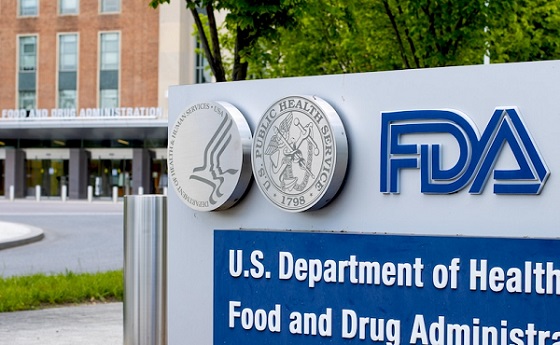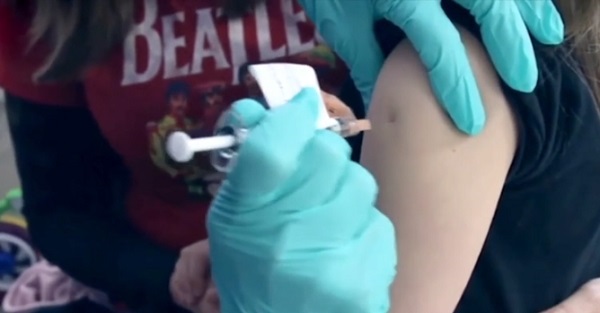Brownstone Institute
Read Between the Lies: A Pattern Recognition Guide

From the Brownstone Institute
By
When Avril Haines, Director of National Intelligence, announced during Event 201’s pandemic drill in 2019 that they would “flood the zone with trusted sources,” few understood this preview of coordinated narrative control. Within months, we watched it unfold in real time—unified messaging across all platforms, suppression of dissent, and coordinated narrative control that fooled much of the world.
But not everyone stayed fooled forever. Some saw through it immediately, questioning every aspect from day one. Others thought it was just incompetent government trying to protect us. Many initially accepted the precautionary principle—better safe than sorry. But as each policy failure pointed in the same direction—toward more control and less human agency—the pattern became impossible to ignore. Anyone not completely subsumed by the system eventually had to confront its true purpose: not protecting health or safety, but expanding control.
Once you recognize this pattern of deception, two questions should immediately arise whenever major stories dominate headlines: “What are they lying about?” and “What are they distracting us from?” The pattern of coordinated deception becomes unmistakable. Consider how media outlets spent three years pushing Russiagate conspiracies, driving unprecedented social division while laying the groundwork for what would become the greatest psychological operation in history. Today, while the media floods us with Ukraine coverage, BlackRock positions itself to profit from both the destruction and reconstruction. The pattern becomes unmistakable once you see it—manufactured crises driving pre-planned “solutions” that always expand institutional control.
Mainstream media operates on twin deceptions: misdirection and manipulation. The same anchors who sold us WMDs in Iraq, promoted “Russia collusion,” and insisted Hunter Biden’s laptop was “Russian disinformation” still occupy prime time slots. Just as we see with RFK, Jr.’s HHS nomination, the pattern is consistent: coordinated attacks replace substantive debate, identical talking points appear across networks, and legitimate questions are dismissed through character assassination rather than evidence. Being consistently wrong isn’t a bug—it’s a feature. Their role isn’t to inform but to manufacture consent.
The template is consistent: Saturate media with emotional spectacles while advancing institutional agendas with minimal scrutiny. Like learning to spot a fake smile or hearing a false note in music, you develop an instinct for the timing:
Money and Power:
- While the media fixated on January 6th, BlackRock and Vanguard quietly tightened their grip on the residential real estate market
- While coverage obsessed over Trump’s Twitter ban, Congress passed the largest upward transfer of wealth under cover of “Covid relief“
- While breathless reporting tracked every move of the Johnny Depp trial, the Fed printed more money than in the entire previous century
- While media flooded us with Ukraine coverage, unprecedented restrictions on energy production reshaped the global economy
- While reporters breathlessly tracked Trump indictments, central banks accelerated plans for programmable digital currency
Medical Control:
- While media focused on celebrity vaccine promotion, unprecedented numbers of young athletes collapsed on field
- While networks ran wall-to-wall coverage of school shootings, documents revealed Pfizer knew about hundreds of side effects
- While coverage fixated on anti-vax “misinformation,” insurance data showed alarming excess death rates
Digital Control:
- While media obsessed over Twitter content moderation, digital ID infrastructure was quietly built worldwide
- While coverage focused on TikTok privacy concerns, central banks accelerated digital currency development
- While endless AI chatbot debates dominated headlines, biometric surveillance systems expanded globally
As these deceptions become more obvious, different forms of resistance emerge. The truth-seeking takes different forms. Some become deep experts in specific deceptions—documenting early treatment successes with repurposed drugs, uncovering hospital protocol failures, or exploring the impact of vaccine injuries. Others develop a broader lens for seeing how narratives themselves are engineered.
Walter Kirn’s brilliant pattern recognition cuts to the heart of our manufactured reality. His tweets dissecting the United CEO murder coverage expose how even violent crimes are now packaged as entertainment spectacles, complete with character arcs and narrative twists. Kirn’s insight highlights a critical dimension of media control: by turning every crisis into an entertainment narrative, they divert attention from deeper questions. Instead of asking why institutional safeguards fail or who benefits, audiences become captivated by carefully scripted outrage. This deliberate distraction ensures that institutional agendas move forward without scrutiny.
His insight reveals how entertainment packaging serves the broader control system. While each investigation requires its own expertise, this pattern of narrative manipulation connects to a larger grid of deception. As I’ve explored in “The Information Factory” and “Engineering Reality,” everything from education to medicine to currency itself has been captured by systems designed to shape not just our choices, but our very perception of reality.
Most revealing is what they don’t cover. Notice how quickly stories disappear when they threaten institutional interests. Remember the Epstein client list? The Maui land grab? The mounting vaccine injuries? The silence speaks volumes.
Consider the recent whistleblower testimonies revealing suppressed safety concerns at Boeing, a company long entangled with regulatory agencies and government contracts. Two whistleblowers—both former employees who raised alarms about safety issues—died under suspicious circumstances. Coverage of their deaths disappeared almost overnight, despite the profound implications for public safety and corporate accountability. This pattern repeats in countless cases where accountability would disrupt entrenched power structures, leaving crucial questions unanswered and narratives tightly controlled.
These decisions aren’t accidental—they result from media ownership, advertiser influence, and government pressure, ensuring the narrative remains tightly controlled.
But perhaps most striking isn’t the media’s deception itself, but how thoroughly it shapes its consumers’ reality. Watch how confidently they repeat phrases clearly engineered in think tanks. Listen as they parrot talking points with religious conviction: “January 6th was worse than 9/11,” “Trust The Science™,” “Democracy is on the ballot” and, perhaps the most consequential lie in modern history, “Safe and Effective.”
The professional-managerial class proves especially susceptible to this programming. Their expertise becomes a prison of status—the more they’ve invested in institutional approval, the more fervently they defend institutional narratives. Watch how quickly a doctor who questions vaccine safety loses his license, how swiftly a professor questioning gender ideology faces review, how rapidly a journalist stepping out of line gets blacklisted.
The system ensures compliance through economic capture: your mortgage becomes your leash, your professional status your prison guard. The same lawyers who prides themselves on critical thinking will aggressively shut down any questioning of official narratives. The professor who teaches “questioning power structures” becomes apoplectic when students question pharmaceutical companies.
The circular validation makes the programming nearly impenetrable:
- Media cites “experts”
- Experts cite peer-reviewed studies
- Studies are funded by industry
- Industry shapes media coverage
- “Fact-checkers” cite media consensus
- Academia enforces approved conclusions
This self-reinforcing system forms a perfect closed loop:

Each component validates the others while excluding outside information. Try finding the entry point for actual truth in this closed system. The professional class’s pride in their critical thinking becomes darkly ironic—they’ve simply outsourced their opinions to “authoritative sources.”
Most disturbing is how willingly they’ve surrendered their sovereignty. Watch them defer:
- “I follow the science” (translation: I wait for approved conclusions)
- “According to experts” (translation: I don’t think for myself)
- “Fact-checkers say” (translation: I let others determine truth)
- “The consensus is” (translation: I align with power)
Their empathy becomes a weapon used against them. Question lockdowns? You’re killing grandma. Doubt transition surgery for minors? You’re causing suicides. Resist equity initiatives? You’re perpetuating oppression. The programming works by making resistance feel like cruelty.
Something remarkable is happening beneath the surface noise: a genuine awakening that defies traditional political boundaries. You see it in the subtle exchanges between colleagues when official narratives strain credibility. In the growing silence at dinner parties as propaganda talking points fall flat. In the knowing looks between strangers when public health theatre reaches new heights of absurdity.
This isn’t a movement in the traditional sense—it can’t be, since traditional movement structures are vulnerable to infiltration, subversion, and capture. Instead, it’s more like a spontaneous emergence of pattern recognition. A distributed awakening without central leadership or formal organization. Those who see through the patterns recognize the mass formation for what it is, while its subjects project their own programming onto others, dismissing pattern recognition as “conspiracy theories,” “anti-science,” or other reflexive labels designed to prevent genuine examination.
The hardest truth isn’t recognizing the programming—it’s confronting what it means for human consciousness and society itself. We’re watching real-time evidence that most human minds can be captured and redirected through sophisticated psychological operations. Their thoughts aren’t their own, yet they’d die defending what they’ve been programmed to believe.
This isn’t just media criticism anymore—it’s an existential question about human consciousness and free will. What does it mean when a species’ capacity for independent thought can be so thoroughly hijacked? When natural empathy and moral instincts become weapons of control? When education and expertise actually decrease resistance to programming?
The programming works because it hijacks core human drives:
- The need for social acceptance (e.g., masking as a visible symbol of conformity)
- The desire to be seen as good/moral (e.g., adopting performative stances on social issues without deeper understanding)
- The instinct to trust authority (e.g., faith in public health officials despite repeated policy reversals)
- The fear of ostracism (e.g., avoiding dissent to maintain social harmony)
- The comfort of conformity (e.g., parroting narratives to avoid cognitive dissonance)
- The addiction to status (e.g., signaling compliance to maintain professional or social standing)
Each natural human trait becomes a vulnerability to be exploited. The most educated become the most programmable because their status addiction runs deepest. Their “critical thinking” becomes a script running on corrupted hardware.
This is the core challenge of our time: Can human consciousness evolve faster than the systems designed to hijack it? Can pattern recognition and awareness spread faster than manufactured consensus? Can enough people learn to read between the lies before the programming becomes complete?
The stakes could not be higher. This isn’t just about politics or media literacy—it’s about the future of human consciousness itself. Whether our species maintains the capacity for independent thought may depend on those who can still access it helping others break free from the spell.
The matrix of control deepens daily, but so does the awakening. The question is: Which spreads faster—the programming or the awareness of it? Our future as a species may depend on the answer.
Brownstone Institute
The Unmasking of Vaccine Science

From the Brownstone Institute
By
I recently purchased Aaron Siri’s new book Vaccines, Amen. As I flipped though the pages, I noticed a section devoted to his now-famous deposition of Dr Stanley Plotkin, the “godfather” of vaccines.
I’d seen viral clips circulating on social media, but I had never taken the time to read the full transcript — until now.
Siri’s interrogation was methodical and unflinching…a masterclass in extracting uncomfortable truths.
A Legal Showdown
In January 2018, Dr Stanley Plotkin, a towering figure in immunology and co-developer of the rubella vaccine, was deposed under oath in Pennsylvania by attorney Aaron Siri.
The case stemmed from a custody dispute in Michigan, where divorced parents disagreed over whether their daughter should be vaccinated. Plotkin had agreed to testify in support of vaccination on behalf of the father.
What followed over the next nine hours, captured in a 400-page transcript, was extraordinary.
Plotkin’s testimony revealed ethical blind spots, scientific hubris, and a troubling indifference to vaccine safety data.
He mocked religious objectors, defended experiments on mentally disabled children, and dismissed glaring weaknesses in vaccine surveillance systems.
A System Built on Conflicts
From the outset, Plotkin admitted to a web of industry entanglements.
He confirmed receiving payments from Merck, Sanofi, GSK, Pfizer, and several biotech firms. These were not occasional consultancies but long-standing financial relationships with the very manufacturers of the vaccines he promoted.
Plotkin appeared taken aback when Siri questioned his financial windfall from royalties on products like RotaTeq, and expressed surprise at the “tone” of the deposition.
Siri pressed on: “You didn’t anticipate that your financial dealings with those companies would be relevant?”
Plotkin replied: “I guess, no, I did not perceive that that was relevant to my opinion as to whether a child should receive vaccines.”
The man entrusted with shaping national vaccine policy had a direct financial stake in its expansion, yet he brushed it aside as irrelevant.
Contempt for Religious Dissent
Siri questioned Plotkin on his past statements, including one in which he described vaccine critics as “religious zealots who believe that the will of God includes death and disease.”
Siri asked whether he stood by that statement. Plotkin replied emphatically, “I absolutely do.”
Plotkin was not interested in ethical pluralism or accommodating divergent moral frameworks. For him, public health was a war, and religious objectors were the enemy.
He also admitted to using human foetal cells in vaccine production — specifically WI-38, a cell line derived from an aborted foetus at three months’ gestation.
Siri asked if Plotkin had authored papers involving dozens of abortions for tissue collection. Plotkin shrugged: “I don’t remember the exact number…but quite a few.”
Plotkin regarded this as a scientific necessity, though for many people — including Catholics and Orthodox Jews — it remains a profound moral concern.
Rather than acknowledging such sensitivities, Plotkin dismissed them outright, rejecting the idea that faith-based values should influence public health policy.
That kind of absolutism, where scientific aims override moral boundaries, has since drawn criticism from ethicists and public health leaders alike.
As NIH director Jay Bhattacharya later observed during his 2025 Senate confirmation hearing, such absolutism erodes trust.
“In public health, we need to make sure the products of science are ethically acceptable to everybody,” he said. “Having alternatives that are not ethically conflicted with foetal cell lines is not just an ethical issue — it’s a public health issue.”
Safety Assumed, Not Proven
When the discussion turned to safety, Siri asked, “Are you aware of any study that compares vaccinated children to completely unvaccinated children?”
Plotkin replied that he was “not aware of well-controlled studies.”
Asked why no placebo-controlled trials had been conducted on routine childhood vaccines such as hepatitis B, Plotkin said such trials would be “ethically difficult.”
That rationale, Siri noted, creates a scientific blind spot. If trials are deemed too unethical to conduct, then gold-standard safety data — the kind required for other pharmaceuticals — simply do not exist for the full childhood vaccine schedule.
Siri pointed to one example: Merck’s hepatitis B vaccine, administered to newborns. The company had only monitored participants for adverse events for five days after injection.
Plotkin didn’t dispute it. “Five days is certainly short for follow-up,” he admitted, but claimed that “most serious events” would occur within that time frame.
Siri challenged the idea that such a narrow window could capture meaningful safety data — especially when autoimmune or neurodevelopmental effects could take weeks or months to emerge.
Siri pushed on. He asked Plotkin if the DTaP and Tdap vaccines — for diphtheria, tetanus and pertussis — could cause autism.
“I feel confident they do not,” Plotkin replied.
But when shown the Institute of Medicine’s 2011 report, which found the evidence “inadequate to accept or reject” a causal link between DTaP and autism, Plotkin countered, “Yes, but the point is that there were no studies showing that it does cause autism.”
In that moment, Plotkin embraced a fallacy: treating the absence of evidence as evidence of absence.
“You’re making assumptions, Dr Plotkin,” Siri challenged. “It would be a bit premature to make the unequivocal, sweeping statement that vaccines do not cause autism, correct?”
Plotkin relented. “As a scientist, I would say that I do not have evidence one way or the other.”
The MMR
The deposition also exposed the fragile foundations of the measles, mumps, and rubella (MMR) vaccine.
When Siri asked for evidence of randomised, placebo-controlled trials conducted before MMR’s licensing, Plotkin pushed back: “To say that it hasn’t been tested is absolute nonsense,” he said, claiming it had been studied “extensively.”
Pressed to cite a specific trial, Plotkin couldn’t name one. Instead, he gestured to his own 1,800-page textbook: “You can find them in this book, if you wish.”
Siri replied that he wanted an actual peer-reviewed study, not a reference to Plotkin’s own book. “So you’re not willing to provide them?” he asked. “You want us to just take your word for it?”
Plotkin became visibly frustrated.
Eventually, he conceded there wasn’t a single randomised, placebo-controlled trial. “I don’t remember there being a control group for the studies, I’m recalling,” he said.
The exchange foreshadowed a broader shift in public discourse, highlighting long-standing concerns that some combination vaccines were effectively grandfathered into the schedule without adequate safety testing.
In September this year, President Trump called for the MMR vaccine to be broken up into three separate injections.
The proposal echoed a view that Andrew Wakefield had voiced decades earlier — namely, that combining all three viruses into a single shot might pose greater risk than spacing them out.
Wakefield was vilified and struck from the medical register. But now, that same question — once branded as dangerous misinformation — is set to be re-examined by the CDC’s new vaccine advisory committee, chaired by Martin Kulldorff.
The Aluminium Adjuvant Blind Spot
Siri next turned to aluminium adjuvants — the immune-activating agents used in many childhood vaccines.
When asked whether studies had compared animals injected with aluminium to those given saline, Plotkin conceded that research on their safety was limited.
Siri pressed further, asking if aluminium injected into the body could travel to the brain. Plotkin replied, “I have not seen such studies, no, or not read such studies.”
When presented with a series of papers showing that aluminium can migrate to the brain, Plotkin admitted he had not studied the issue himself, acknowledging that there were experiments “suggesting that that is possible.”
Asked whether aluminium might disrupt neurological development in children, Plotkin stated, “I’m not aware that there is evidence that aluminum disrupts the developmental processes in susceptible children.”
Taken together, these exchanges revealed a striking gap in the evidence base.
Compounds such as aluminium hydroxide and aluminium phosphate have been injected into babies for decades, yet no rigorous studies have ever evaluated their neurotoxicity against an inert placebo.
This issue returned to the spotlight in September 2025, when President Trump pledged to remove aluminium from vaccines, and world-leading researcher Dr Christopher Exley renewed calls for its complete reassessment.
A Broken Safety Net
Siri then turned to the reliability of the Vaccine Adverse Event Reporting System (VAERS) — the primary mechanism for collecting reports of vaccine-related injuries in the United States.
Did Plotkin believe most adverse events were captured in this database?
“I think…probably most are reported,” he replied.
But Siri showed him a government-commissioned study by Harvard Pilgrim, which found that fewer than 1% of vaccine adverse events are reported to VAERS.
“Yes,” Plotkin said, backtracking. “I don’t really put much faith into the VAERS system…”
Yet this is the same database officials routinely cite to claim that “vaccines are safe.”
Ironically, Plotkin himself recently co-authored a provocative editorial in the New England Journal of Medicine, conceding that vaccine safety monitoring remains grossly “inadequate.”
Experimenting on the Vulnerable
Perhaps the most chilling part of the deposition concerned Plotkin’s history of human experimentation.
“Have you ever used orphans to study an experimental vaccine?” Siri asked.
“Yes,” Plotkin replied.
“Have you ever used the mentally handicapped to study an experimental vaccine?” Siri asked.
“I don’t recollect…I wouldn’t deny that I may have done so,” Plotkin replied.
Siri cited a study conducted by Plotkin in which he had administered experimental rubella vaccines to institutionalised children who were “mentally retarded.”
Plotkin stated flippantly, “Okay well, in that case…that’s what I did.”
There was no apology, no sign of ethical reflection — just matter-of-fact acceptance.
Siri wasn’t done.
He asked if Plotkin had argued that it was better to test on those “who are human in form but not in social potential” rather than on healthy children.
Plotkin admitted to writing it.
Siri established that Plotkin had also conducted vaccine research on the babies of imprisoned mothers, and on colonised African populations.
Plotkin appeared to suggest that the scientific value of such studies outweighed the ethical lapses—an attitude that many would interpret as the classic ‘ends justify the means’ rationale.
But that logic fails the most basic test of informed consent. Siri asked whether consent had been obtained in these cases.
“I don’t remember…but I assume it was,” Plotkin said.
Assume?
This was post-Nuremberg research. And the leading vaccine developer in America couldn’t say for sure whether he had properly informed the people he experimented on.
In any other field of medicine, such lapses would be disqualifying.
A Casual Dismissal of Parental Rights
Plotkin’s indifference to experimenting on disabled children didn’t stop there.
Siri asked whether someone who declined a vaccine due to concerns about missing safety data should be labelled “anti-vax.”
Plotkin replied, “If they refused to be vaccinated themselves or refused to have their children vaccinated, I would call them an anti-vaccination person, yes.”
Plotkin was less concerned about adults making that choice for themselves, but he had no tolerance for parents making those choices for their own children.
“The situation for children is quite different,” said Plotkin, “because one is making a decision for somebody else and also making a decision that has important implications for public health.”
In Plotkin’s view, the state held greater authority than parents over a child’s medical decisions — even when the science was uncertain.
The Enabling of Figures Like Plotkin
The Plotkin deposition stands as a case study in how conflicts of interest, ideology, and deference to authority have corroded the scientific foundations of public health.
Plotkin is no fringe figure. He is celebrated, honoured, and revered. Yet he promotes vaccines that have never undergone true placebo-controlled testing, shrugs off the failures of post-market surveillance, and admits to experimenting on vulnerable populations.
This is not conjecture or conspiracy — it is sworn testimony from the man who helped build the modern vaccine program.
Now, as Health Secretary Robert F. Kennedy, Jr. reopens long-dismissed questions about aluminium adjuvants and the absence of long-term safety studies, Plotkin’s once-untouchable legacy is beginning to fray.
Republished from the author’s Substack
Brownstone Institute
Bizarre Decisions about Nicotine Pouches Lead to the Wrong Products on Shelves

From the Brownstone Institute
A walk through a dozen convenience stores in Montgomery County, Pennsylvania, says a lot about how US nicotine policy actually works. Only about one in eight nicotine-pouch products for sale is legal. The rest are unauthorized—but they’re not all the same. Some are brightly branded, with uncertain ingredients, not approved by any Western regulator, and clearly aimed at impulse buyers. Others—like Sweden’s NOAT—are the opposite: muted, well-made, adult-oriented, and already approved for sale in Europe.
Yet in the United States, NOAT has been told to stop selling. In September 2025, the Food and Drug Administration (FDA) issued the company a warning letter for offering nicotine pouches without marketing authorization. That might make sense if the products were dangerous, but they appear to be among the safest on the market: mild flavors, low nicotine levels, and recyclable paper packaging. In Europe, regulators consider them acceptable. In America, they’re banned. The decision looks, at best, strange—and possibly arbitrary.
What the Market Shows
My October 2025 audit was straightforward. I visited twelve stores and recorded every distinct pouch product visible for sale at the counter. If the item matched one of the twenty ZYN products that the FDA authorized in January, it was counted as legal. Everything else was counted as illegal.
Two of the stores told me they had recently received FDA letters and had already removed most illegal stock. The other ten stores were still dominated by unauthorized products—more than 93 percent of what was on display. Across all twelve locations, about 12 percent of products were legal ZYN, and about 88 percent were not.
The illegal share wasn’t uniform. Many of the unauthorized products were clearly high-nicotine imports with flashy names like Loop, Velo, and Zimo. These products may be fine, but some are probably high in contaminants, and a few often with very high nicotine levels. Others were subdued, plainly meant for adult users. NOAT was a good example of that second group: simple packaging, oat-based filler, restrained flavoring, and branding that makes no effort to look “cool.” It’s the kind of product any regulator serious about harm reduction would welcome.
Enforcement Works
To the FDA’s credit, enforcement does make a difference. The two stores that received official letters quickly pulled their illegal stock. That mirrors the agency’s broader efforts this year: new import alerts to detain unauthorized tobacco products at the border (see also Import Alert 98-06), and hundreds of warning letters to retailers, importers, and distributors.
But effective enforcement can’t solve a supply problem. The list of legal nicotine-pouch products is still extremely short—only a narrow range of ZYN items. Adults who want more variety, or stores that want to meet that demand, inevitably turn to gray-market suppliers. The more limited the legal catalog, the more the illegal market thrives.
Why the NOAT Decision Appears Bizarre
The FDA’s own actions make the situation hard to explain. In January 2025, it authorized twenty ZYN products after finding that they contained far fewer harmful chemicals than cigarettes and could help adult smokers switch. That was progress. But nine months later, the FDA has approved nothing else—while sending a warning letter to NOAT, arguably the least youth-oriented pouch line in the world.
The outcome is bad for legal sellers and public health. ZYN is legal; a handful of clearly risky, high-nicotine imports continue to circulate; and a mild, adult-market brand that meets European safety and labeling rules is banned. Officially, NOAT’s problem is procedural—it lacks a marketing order. But in practical terms, the FDA is punishing the very design choices it claims to value: simplicity, low appeal to minors, and clean ingredients.
This approach also ignores the differences in actual risk. Studies consistently show that nicotine pouches have far fewer toxins than cigarettes and far less variability than many vapes. The biggest pouch concerns are uneven nicotine levels and occasional traces of tobacco-specific nitrosamines, depending on manufacturing quality. The serious contamination issues—heavy metals and inconsistent dosage—belong mostly to disposable vapes, particularly the flood of unregulated imports from China. Treating all “unauthorized” products as equally bad blurs those distinctions and undermines proportional enforcement.
A Better Balance: Enforce Upstream, Widen the Legal Path
My small Montgomery County survey suggests a simple formula for improvement.
First, keep enforcement targeted and focused on suppliers, not just clerks. Warning letters clearly change behavior at the store level, but the biggest impact will come from auditing distributors and importers, and stopping bad shipments before they reach retail shelves.
Second, make compliance easy. A single-page list of authorized nicotine-pouch products—currently the twenty approved ZYN items—should be posted in every store and attached to distributor invoices. Point-of-sale systems can block barcodes for anything not on the list, and retailers could affirm, once a year, that they stock only approved items.
Third, widen the legal lane. The FDA launched a pilot program in September 2025 to speed review of new pouch applications. That program should spell out exactly what evidence is needed—chemical data, toxicology, nicotine release rates, and behavioral studies—and make timely decisions. If products like NOAT meet those standards, they should be authorized quickly. Legal competition among adult-oriented brands will crowd out the sketchy imports far faster than enforcement alone.
The Bottom Line
Enforcement matters, and the data show it works—where it happens. But the legal market is too narrow to protect consumers or encourage innovation. The current regime leaves a few ZYN products as lonely legal islands in a sea of gray-market pouches that range from sensible to reckless.
The FDA’s treatment of NOAT stands out as a case study in inconsistency: a quiet, adult-focused brand approved in Europe yet effectively banned in the US, while flashier and riskier options continue to slip through. That’s not a public-health victory; it’s a missed opportunity.
If the goal is to help adult smokers move to lower-risk products while keeping youth use low, the path forward is clear: enforce smartly, make compliance easy, and give good products a fair shot. Right now, we’re doing the first part well—but failing at the second and third. It’s time to fix that.
-

 Business2 days ago
Business2 days agoTaxing food is like slapping a surcharge on hunger. It needs to end
-

 Health2 days ago
Health2 days agoFDA warns ‘breast binder’ manufacturers to stop marketing to gender-confused girls
-

 Daily Caller1 day ago
Daily Caller1 day agoTrump Reportedly Escalates Pressure On Venezuela With Another Oil Tanker Seizure
-

 International1 day ago
International1 day ago2025: The Year The Narrative Changed
-

 Business1 day ago
Business1 day agoThere’s No Bias at CBC News, You Say? Well, OK…
-

 Uncategorized16 hours ago
Uncategorized16 hours agoMortgaging Canada’s energy future — the hidden costs of the Carney-Smith pipeline deal
-

 Health2 days ago
Health2 days agoAll 12 Vaccinated vs. Unvaccinated Studies Found the Same Thing: Unvaccinated Children Are Far Healthier
-

 Agriculture2 days ago
Agriculture2 days agoSupply Management Is Making Your Christmas Dinner More Expensive













